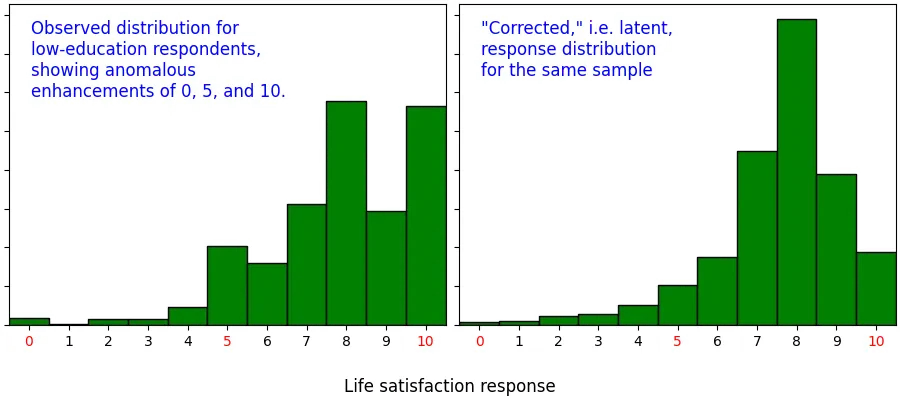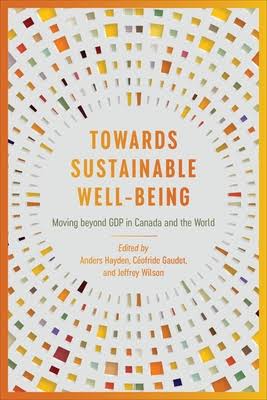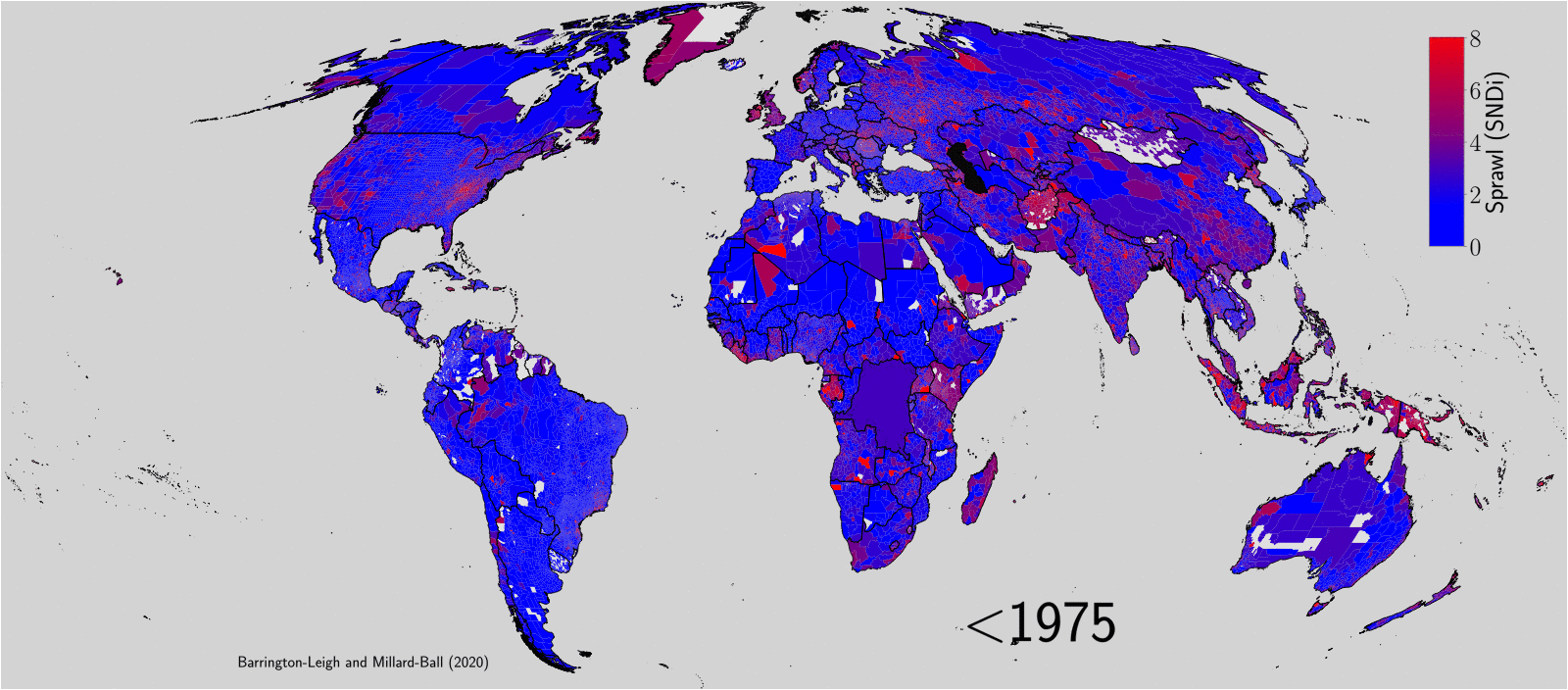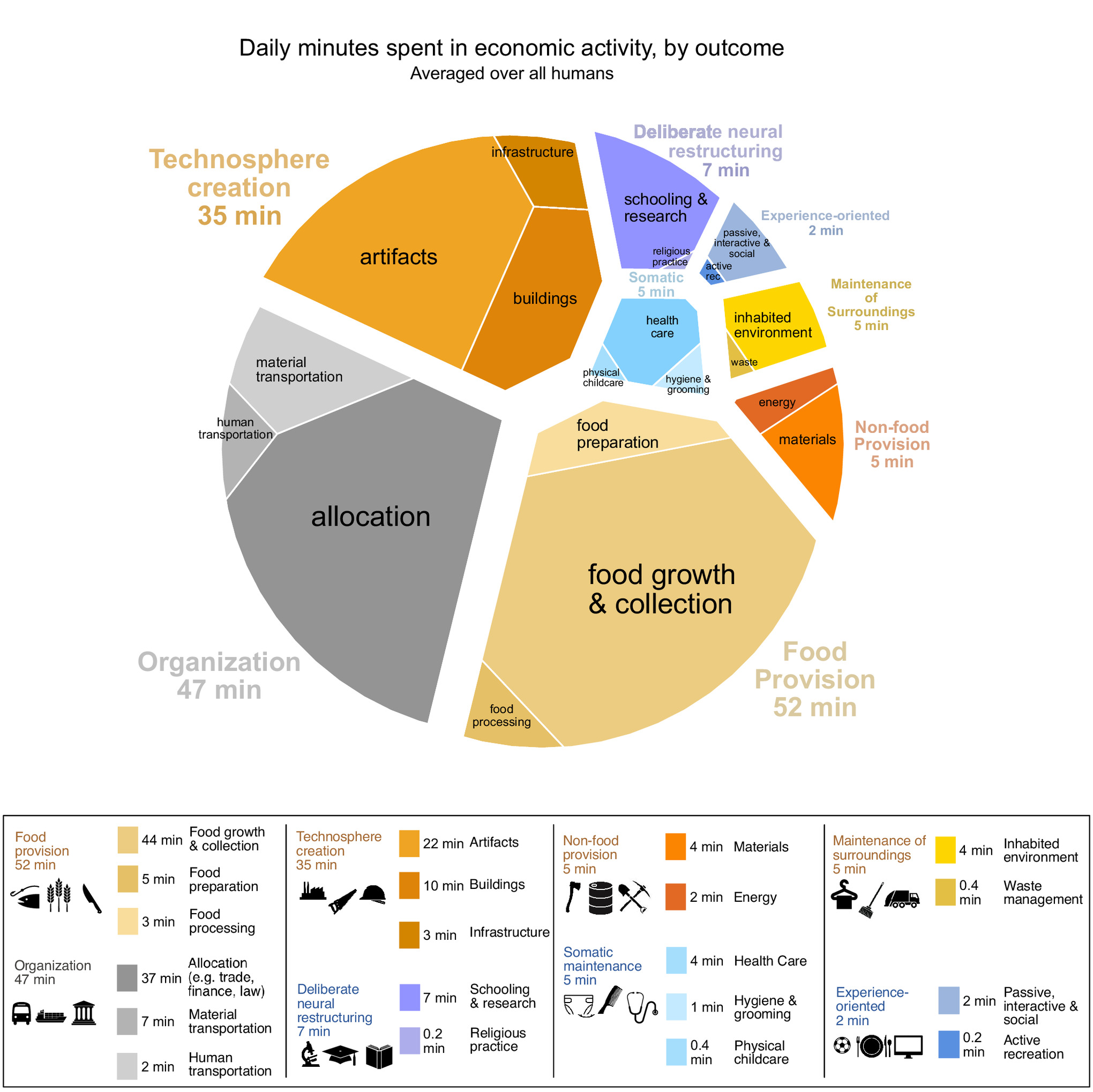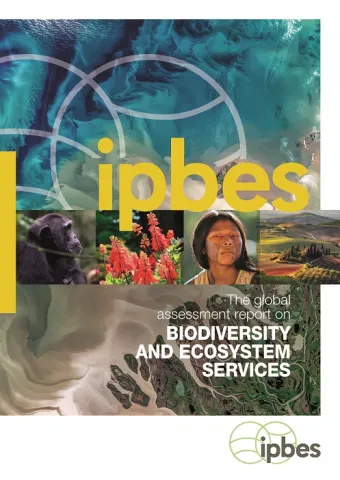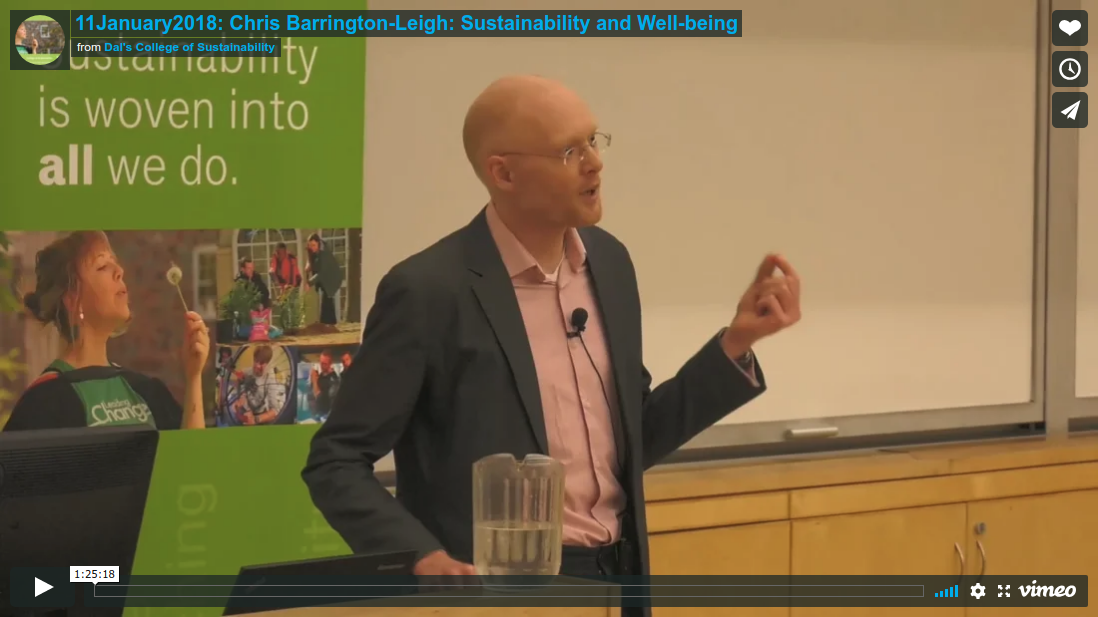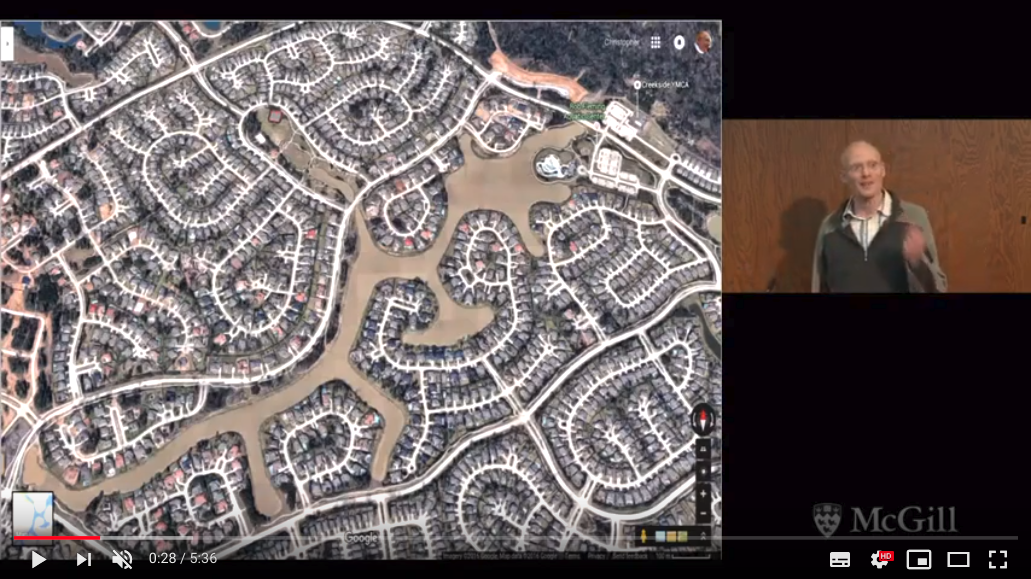- The "economics of well-being"
We use large data sets from surveys that include self-reports of life evaluations in order to understand the empirical, experienced human benefits of economic and social conditions, changes, and policy. See also lifesatisfaction.ca - Wellbeing policy
The Canadian Wellbeing Knowledges Network brings together practitioners and policy makers interested in putting the evidence on what makes life good to work in policy and organizations. - Urban street networks and climate policy
We are investigating the impact of extant and plausible policies aimed at mitigating greenhouse gas concentrations in the atmosphere. This includes quantitative analysis of the variation and evolution of urban form. See sprawlmap.org - Solved collective action problems
Is solving collective action problems a defining characteristic of human society and governance systems? We are building a database of solved collective action problems.
- Energy transition in China
We piloted a household survey in rural Beijing to understand household experience and behaviour in response to the major coal-to-electricity intervention currently transforming home heating. A multi-year collaborative project followed, measuring airborne pollution and exposure, health outcomes, as well as household experience and behaviour in 1000 households across 50 villages in rural Beijing. - Experiments on social preferences
We have carried out some lab experiments to further our understanding of consumption externalities and social preferences.
Publications: Economics of happiness
"The econometrics of happiness: Are we underestimating the returns to education and income?", Journal of Public Economics, DOI:10.1016/j.jpubeco.2023.105052, January 2024.
Happiness, life satisfaction, and other numerical subjective response scales suffer from arbitrarily large biases when numerically-averse respondents simplify the scale. A new model accounts for the problem and its impact on key estimates of the value of income and education. |
|||||
Eric D. Galbraith, Christopher Barrington-Leigh, Sara Miñarro, Santiago Álvarez-Fernández, Emmanuel M. N. A. N. Attoh, Petra Benyei, Laura Calvet-Mir, Rosario Carmona, Rumbidzayi Chakauya, Zhuo Chen, Fasco Chengula, Álvaro Fernández-Llamazares, David García-del-Amo, Marcos Glauser, Tomas Huanca, Andrea E. Izquierdo, André B. Junqueira, Marisa Lanker, Xiaoyue Li, Juliette Mariel, Mohamed D. Miara, Vincent Porcher, Anna Porcuna-Ferrer, Anna Schlingmann, Reinmar Seidler, Uttam Babu Shrestha, Priyatma Singh, Miquel Torrents-Ticó, Tungalag Ulambayar, Rihan Wu, and Victoria Reyes-García,
"High life satisfaction reported among small-scale societies with low incomes", Proceedings of the National Academy of Sciences, DOI:10.1073/pnas.2311703121, February 2024.
|
|||||
"Trends in conceptions of progress and well-being,"
World Happiness Report 2022, March 2022.
Chapter 3 of this year's World Happiness Report surveys trends in the influence of our growing understanding about happiness.
|
|||||
Sara Miñarro, Victoria Reyes-García, Shankar Aswani, Samiya Selim, Christopher P. Barrington-Leigh, and Eric D. Galbraith,
"Happy without money: minimally monetized societies can exhibit high subjective well-being"
PLoS ONE, doi:10.1371/journal.pone.0244569, 13 Jan 2021.
One of the most frequent objections to the use of life satisfaction as a measure of wellbeing is that underprivileged societies might anyway report high life satisfaction. Here, we give evidence of that possibility --- but not as a problem with the measurement! |
|||||
"Feasible future global scenarios for human life evaluations" (With Eric Galbraith), Nature Communications, Volume 10, Number: 161, doi:10.1038/s41467-018-08002-2, January 2019.
What does recent research into the human happiness tell us about life in the future? We use trends that account for differences in happiness across countries and over time to project what life could be like in 2050, in good and bad scenarios. Our findings highlight the critical role of non-material factors such as social supports, freedoms, and fairness in determining the future of human well-being.Published PDF, Supplementary information PDF, both together (PDF), and complete reviewer transcript PDF |
|||||
"How Happy are Your Neighbours? Variation in Life Satisfaction among 1200 Canadian Neighbourhoods and Communities"
(with John F. Helliwell, Hugh Shiplett) PLoS ONE, 14(1): doi:10.1371/journal.pone.0210091, January 2019.
The first high-resolution map of life satisfaction across CanadaInteractive map NBER working paper 24592. Download our data |
|||||
|
"Early-life family income and subjective well-being in adolescents" (with Genevieve Gariepy, Frank J. Elgar, Mariane Sentenac),
PLOS One,
doi:10.1371/journal.pone.0179380, July 2017.
|
|||||
"The Impact of Daily Weather Conditions on Life Satisfaction: Evidence from Cross-sectional and Panel Data" (with Fatemeh Behzadnejad), Journal of Economic Psychology, Volume 59, pages 145–163 doi:10.1016/j.joep.2017.01.003, April 2017.
JEP PDF (free for a while) |
|||||
"Evaluating the short-term cost of low-level local air pollution: a life satisfaction approach" (with
Fatemeh Behzadnejad), Environmental Economics and Policy Studies,
Volume 19, Issue 2, pp 269–298
doi:10.1007/s10018-016-0152-7, April 2017.
Canada has relatively low urban air pollution, yet we identify strong income-equivalent effects of daily variation in air quality, through the life satisfaction approach. Published EEPS PDF and the acknowledgements (as a separate erratum). |
|||||
"Life satisfaction among Aboriginals in the
Canadian Prairies: Evidence from the Equality,
Security and Community survey" (with Sabina Sloman), The International Indigenous Policy Journal, doi:10.18584/iipj.2016.7.2.2,
Vol. 7, No. 2, 25 May 2016.
Subjective well-being (life satisfaction, in particular) is extensively measured in Canada but not for Aboriginal citizens on reserve. Using data from a rare 2003 exception, we find some expected consistencies with other populations, in terms of the relationship between objective life circumstances and subjective reports, and some differences. IIPJ PDF |
|||||
"Rising life satisfaction in Korea: A Panel Data Analysis", in Measuring and Explaining Subjective Well-being in Korea, May 2015.
South Korea represents, along with Quebec, a remarkable example of a society which has experienced a significant and steady rise in reported life satisfaction over more than a decade. This chapter uses a detailed panel survey to shed light on who is benefiting and why. Just Chapter 5 from the book | |||||
"Consumption
Externalities", Encyclopedia of Quality of Life and Well-Being Research, Michalos, Alex C. (Ed.), Springer, 2014.
This is an encyclopedia entry with a focus on relative income effects, which is often now what economists mean when they refer to consumption externalities. Usually "externalities" by itself refers instead to some form of production externality. | |||||
|
Lara B. Aknin, C. P. Barrington-Leigh, Elizabeth W. Dunn,
John F. Helliwell, Robert
Biswas-Diener, Imelda Kemeza, Paul Nyende, Claire Ashton-James, Michael
I. Norton, "Prosocial Spending and Well-Being: Cross-Cultural Evidence for a Psychological Universal", Journal of Personality and Social Psychology, Vol 104(4), Apr 2013, 635-652. DOI: 10.1037/a0031578 (supplement) Correlations in survey data from 136 countries are complemented by experiments carried out in Canada, Uganda, and South Africa to suggest that human beings around the world derive emotional benefits from using their financial resources to help others (prosocial spending). A (much older) version (2010) was issued as an NBER working paper. APA-PDF with appendix | |||||
"The
Québec convergence and Canadian life satisfaction 1985--2008,"
Canadian Public Policy / Analyse de Politiques, Vol. 39., No. 2, June 2013. DOI:
10.3138/CPP.39.2.193
Using 25 years of the Canadian General Social Survey, I examine trends in life satisfaction and economic and social variables and find that Québec has undergone a remarkable upward shift in mean life satisfaction, as compared with the rest of Canada, during this period. The shift is not easy to explain with conventional economic indices. CPP PDF 27pp Video animations in English and French are available to show the evolution over time: Presentation (PDF) from 30 May 2012 "Forum Vers un indicateur officiel du mieux-vivre québécois", Quebec City. An older (2010) version of the paper is available (and includes an analysis of consistency over time of inferences about local communities). | |||||
"How much is social capital worth?" (with John F.
Helliwell), a chapter in The Social Cure: Identity, Health, and
Well-being, edited by Jolanda Jetten, Catherine Haslam, and S.
Alexander Haslam, 2011.
The NBER version | |||||
"Measuring and
Understanding Subjective Well-Being" (with John F. Helliwell), Canadian
Journal of Economics, Vol. 43, Issue 3, pp.
729-753, August 2010.
The CJE version | |||||
"International evidence on the social context of
well-being" (with John F. Helliwell, Anthony Harris, and Haifang
Huang), a chapter in International Differences in Well-Being,
edited by Kahneman, Diener and Helliwell (Oxford University Press),
2010.
On Google books | |||||
Publications: Energy and climate policy
Reyes-García, Victoria and Attoh, Emmanuel M. N. A. N. and Barrington-Leigh, Christopher and Benyei, Petra and Calvet-Mir, Laura and Chakauya, Rumbidzayi and Al Faisal, Abdullah and Galbraith, Eric D. and Glauser, Marcos and Izquierdo, Andrea E. and Junqueira, André B. and Li, Xiaoyue and López-Maldonado, Yolanda and Miñarro, Sara and Porcher, Vincent and Porcuna-Ferrer, Anna and Schlingmann, Anna and Singh, Priyatma and Torrents-Ticó, Miquel and LICCI Consortium,
"Experienced climate change impacts help explain subjective well-being — Evidence from 14 nature-dependent communities", People and Nature, DOI:10.1002/pan3.70230, 2025.
We investigate the association between perceived climate change impacts, their severity and life satisfaction using cross-culturally comparable first-hand reports from 2488 participants across 14 nature-dependent communities. We find a negative association between average life satisfaction and both instrumental measurements of climate change and perceptions of local impacts and reported severity. Within sites, individual-level associations between perceived severity of climate change impacts and life satisfaction are weak or absent. |
|||
|
Xiang Zhang, C P Barrington-Leigh, and Brian E Robinson, "Rural household energy transition in China: Trends and challenges", Journal of Cleaner Production, DOI:10.1016/j.jclepro.2024.141871, 2024.
|
|||
"An evaluation of air quality, home heating, and well-being under Beijing’s program to
eliminate household coal use" (with Jill Baumgartner, Ellison Carter, Brian Robinson, Shu Tao, Yuanxun Zhang), Nature Energy, Volume 4, pages 416-423, doi:10.1038/s41560-019-0386-2, May 2019.
Manuscript version with SI: (PDF) |
|||
"The renewable energy landscape in Canada:
a spatial analysis" (with Mark Ouliaris), Renewable & Sustainable Energy Reviews, Volume 75, pages 809-819, doi:10.1016/j.rser.2016.11.061, August 2017.
Two new things are in this paper: we look at likely future renewable energy portfolios with enough geographic resolution to split them up by province. We also provide an intuitive breakdown, by province, of what energy (electricity and other) is currently used for. Bringing these together, we find which provinces could be fully renewably powered. A series of province-by-province graphics and all other extra material is available online. It includes links to 1-page PDF summaries for all provinces; and individually: BC; AB; SK; MB; ON; QC; NB; NS; PE; NF Full manuscript published in RSER (PDF) |
|||
"Short-run household, industrial, and labour impacts of the Québec carbon market" (with Bronwen Tucker
and Joaquin Kritz Lara), Canadian Public Policy, 1 December 2015.
doi:10.3138/cpp.2015-015 (PDF)
More detailed working paper version: PDF |
|||
Matthew Brown, Christopher Barrington-Leigh, Zosia Brown, "Kernel
Regression for Real-Time Building Energy Analysis", Journal of
Building Performance Simulation, June 2011. DOI:
10.1080/19401493.2011.577539
preprint |
|||
Publications: Wellbeing policy
Wellbeing and Policy in Canada:
Progress towards measurement and practice,
chapter 22 in Wellbeing and Policy: Evidence for Action
, Eds. Briguglio, Czap, and Laffan,
DOI:
10.4324/9781003382447-25, 2025.
Canada was an early adopter of subjective wellbeing and measures of social connection in its mainline surveys, and has recently begun integrating an avant-garde quality-of-life framework in the federal government. Due to its federal structure, large size, and diverse Indigenous cultures and knowledge systems, it is also a challenging context for coalescing on standardized measures and approaches to wellbeing. This chapter reports on a steadily decreasing trend in measured life satisfaction across Canada over the past decade. It also surveys the prominent contributions to measuring wellbeing, to bringing evidence from it to inform decision-making, and to raising awareness and support for wellbeing as a goal in policy. These include a number of independent as well as coordinated efforts by First Nations in Canada to define, collect, and curate wellbeing data. A nascent country-wide civil society effort aims to bring a network of governments and practitioners together to share evidence and experience and to ensure that a shift towards wellbeing policy in the central government remains on course. While there is plenty of evidence of the effectiveness of policies targeting important determinants of wellbeing, there is relatively little evidence about the effectiveness of a wellbeing orientation to policy, overall.Chapter 22 (PDF) This chapter is an abridged version of a longer working paper, "Wellbeing in Canada: progress towards measurement, policy, and practice" (Latest PDF) 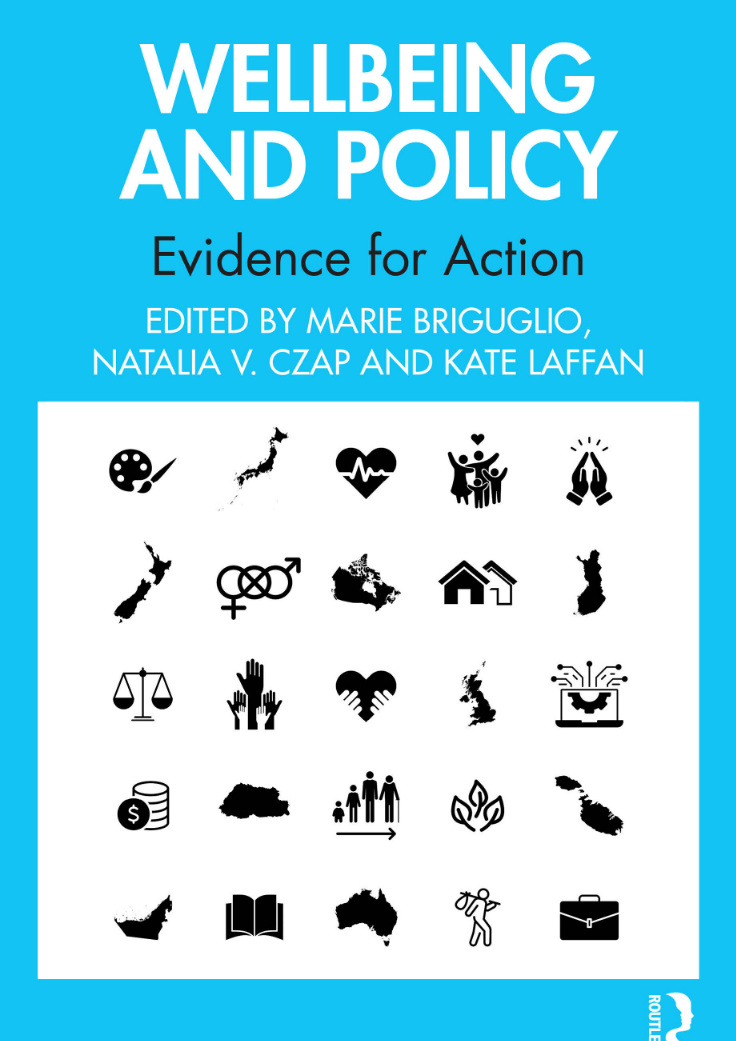 Entire book (PDF; or, buy the paperback -- no royalties). |
|||||
"A public, open, and independently-curated database of happiness coefficients" (with Katja Lemermeyer), Journal of Happiness Studies, doi 10.1007/s10902-023-00652-4, April 2023.
Full manuscript (PDF). |
|||||
"Wellbeing, sustainability, and progress: a framework for public and
policy discourse and for quantitative decision-making using the life satisfaction approach"
in Toward Sustainable Wellbeing: Moving Beyond GDP in Canada and the World, Anders
Hayden, Céo Gaudet, and Jeffrey Wilson (Eds.), University of Toronto, October 2022.
|
|||||
"Policies to support happiness during and after COVID-19:
A Synthesis" (John F. Helliwell, Lara B. Aknin, C. P. Barrington-Leigh, Jon Hall, Haifang Huang, Max B. Norton,
Hugh Shiplett and Shun Wang), Chapter 1 in Global Happiness and Wellbeing Policy Report 2022, The Global Council
for Happiness and Wellbeing, New York: Sustainable Development Solutions Network, 2022.
This is the first chapter in a collection of policy briefs. It provides summaries and synthesis. Complete PDF |
|||||
"Life satisfaction and sustainability:
a policy framework,"
SN Social Sciences, doi:10.1007/s43545-021-00185-8, July 2021.
New institutions are needed in order for policy and government budgets to be suitably accountable to experienced human wellbeing. However, mostly the infrastructure is already there, at least in seed form. Care should be taken not to over-extend ambitions for applying this kind of benefit/cost approach to human outcomes. That is, some long-run conservation questions will still need to be decided largely on another basis.Manuscript (PDF) Published (SNSS) version (PDF) 
|
|||||
"Informing policy priorities using inference from life satisfaction responses in a large community survey" (with Jan Wollenberg), Applied Research in Quality of Life, doi:10.1007/s11482-018-9629-9, 14:911-924,
2019.
Analysis of life satisfaction data in Connecticut from Datahaven's survey.PDF manuscript, with Supplemental Information. This version contains a correction of a mistake in the published version. Our blog post at LSE on this paper: How state and local governments can buy their citizens’ happiness |
|||||
"Author's Response - Sustainability and Well-Being: A Happy Synergy",
Great Transition Initiative, April 2017.
My collected responses to selected reactions, from the GTI community, to my perspective piece. For me, this is as important a piece of writing as the original article. Here I advocate for society to maximise life satisfaction subject to a large set of material constraints. I also address a number of standard objections to reliance on life satisfaction data, as well as to my optimism. |
|||||
"Sustainability and Well-Being: A Happy Synergy", Development, Vol. 59, No. 3, pp 292-298, doi:10.1057/s41301-017-0113-x, July 2017.
The "inconvenient truths" threatening our future, such as climate change and social polarization, receive justifiable notoriety. But there are also "convenient truths" that provide the basis for hope. This essay explores a win-win for people and planet: the ways that nurturing satisfying lives aligns with the search for environmental sustainability. The Great Transition Initiative version (PDF). |
|||||
"The role of subjective well-being as an organizing
concept for community indicators", chapter
in Community Quality-of-Life Indicators: Best Cases VII, Meg Holden, Rhonda Phillips and Chantal Stevens (Eds.), published by Springer, 2017.
|
|||||
"Measuring progress and well-being: A
comparative review of indicators" (with Alice Escande), Social Indicators Research,
doi:10.1007/s11205-016-1505-0, Volume 135, Issue 3, pp 893–925, February 2018.
We provide a new database (MPWB) sampling well-being and progress indicators implemented since the 1970s at all geographic scales. We assess in particular the roles of subjective well-being and of sustainability metrics in the evolution of attempts to better measure progress and the broadest social outcomes. Springer-Nature's free online version PDF manuscript Our full MPWB database of indicators is available under the Creative Commons license. |
|||||
"Comprendre l'égalité par le bien-être: le cas du Québec", in Miser sur l'égalité, l'Institut du Nouveau Monde, 2014
English version, "Using measured well-being to understand equality: the case of Québec" (PDF) The preface and conclusion from the book are available. | |||||
|
"Cutting through the
Clutter: Searching for
an Over-Arching
Measure of Well-Being" (with Jon Hall and John F. Helliwell),
DICE Report, Vol. 8, Issue 4, 2011.
| |||||
Publications: Street networks and urban form
|
Fajle Rabbi Ashik and Christopher P. Barrington-Leigh and Kevin Manaugh, "Built environment's main and moderating associations with travel mode choice across trip purposes", Journal of Transport Geography, 129, 104434, October 2025. DOI:10.1016/j.jtrangeo.2025.104434
| |||
Fajle Rabbi Ashik, Christopher P. Barrington-Leigh, and Kevin Manaugh, "Street network connectivity leads to denser urban form in Canadian cities",
Cities
, DOI:
10.1177/23998083241306829, 161, June 2025, 105844.
The enduring nature of street connectivity implies that any later modifications to other elements of urban infrastructure cannot escape the constraints imposed by the initial street connectivity. This paper, using Canadian data, tests the permanence of this impact in preventing low-connectivity neighbourhoods from densifying. |
|||
"A high-resolution global time series of street-network sprawl" (with Adam Millard-Ball),
Environment and Planning B: Urban Analytics and City Science
, DOI:10.1177/23998083241306829, January 2025.
In this follow-up to our global street network time series paper, we update the data and method, and release the full data set including micro-level vector/network data for more or less every street and intersection on the planet. You can get our code, our data, and more with a cite-us license. You can also visualize it all at our updated sprawlmap.org site.You might prefer our PDF layout to EPB's. |
|||
Adam Millard-Ball,
Ben Silverstein,
Purva Kapshikar,
Sierra Stevenson, and
Chris Barrington-Leigh,
"Dividing Highways: Barrier Effects and Environmental Justice in California",
Journal of Planning Education and Research,
DOI:10.1177/0739456X241247330, 2024.
See freewayseverance.org for an interactive interface, made by the first and third authors, to explore the data and results. |
|||
Felix Vazquez, Adam Millard-Ball, Christopher Barrington-Leigh,
"Urban development & street-network sprawl in Tokyo", Journal of Urbanism: International Research on Placemaking and Urban Sustainability, doi 10.1080/17549175.2023.2262698, October 2023.
This paper uses Tokyo as a case study to explore the processes of urban development and sprawl through the lenses of street connectivity and historical development. |
|||
"Global trends towards urban street-network sprawl"
(with Adam Millard-Ball) Proceedings of the National Academy of Sciences, doi:
10.1073/pnas.1905232116
, January 2020.
The pattern of new urban and residential roads represents an essentially permanent backbone that shapes new urban form and land use in the world’s cities. Thus, today’s choices on the connectivity of streets may restrict future resilience and lock in pathways of energy use and CO2 emissions for a century or more. In contrast to the corrective trend observed in the USA, where streets have become more connected since the late 20th century, we find that most of the world is building ever-more disconnected “street-network sprawl.” A rapid policy response, including regulation and pricing tools, is needed to avoid further costly lock-in during this current, final phase of the urbanization process.Interactive map: 
See our Supplementary Information, download our data, etc, and download our code.
Selected recent public attention:
Listen to our PNAS podcast. | |||
"A global assessment of street-network sprawl"
(with Adam Millard-Ball) PLoS ONE, 14(11): doi:10.1371/journal.pone.0210091, November 2019.
We define a new, globally-comparable index of street-network sprawl, and map it for the entire planet. We define a classification of street network types for geographic grid cells. We provide qualitative and quantitative validations for our measures.Interactive map See our Supplementary Information, download our data, etc, and download our code. | |||
"The world's user-generated road map is more than 80%
complete" (with Adam Millard-Ball),
PLOS One,
doi:10.1371/journal.pone.0180698, August 2017.
We provide the first comprehensive assessment of completeness for the world's only global-level, openly licensed source of geospatial road data, OpenStreetMap (OSM). We use two complementary, independent methods to assess the completeness of OSM road data in each country and provide a new estimate of global road length which represents a substantial revision to existing assessments. With this publication we are also releasing our complete computer code and datasets under open licenses. PLOS One's PDF PDF manuscript |
|||
"More connected urban roads reduce US GHG emissions" (with Adam Millard-Ball), Environmental Research Letters,
Volume 12, Number 4
doi:10.1088/1748-9326/aa59ba, 2017.
Our choice of where to lay down local road networks in new residential developments may have long-lasting impacts on climate change. Because these choices are more permanent than nearly any other development decision, and because their impacts on urban form may grow over time, we consider the impacts of changing road network connectivity on transportation greenhouse gas emissions over the coming half century. Open access PDF and Supplementary information from ERL. |
|||
"The Beginning of the End of Sprawl, Public Sector Digest, Dec 2015.
A look at street-network urban sprawl in Canada, including a breakdown by metro area and by municipality of whose streets are worst for trapping people in a lifestyle with car-oriented mobility. I also analyze which the trends in new developments in each city. |
|||
"A Century of Sprawl in the United States" (with Adam Millard-Ball), Proceedings of the National Academy of Sciences, 15 June 2015. doi:10.1073/pnas.1504033112
The urban street network is one of the most permanent features of cities. Once laid down, the pattern of streets determines urban form and the level of sprawl for decades to come. We present a high-resolution time series of urban sprawl, as measured through street network connectivity, in the United States from 1920 to 2012. We find a major turnaround in newly constructed road-network sprawl in the mid-1990s. PNAS article with Supporting Information (PDF) Our open dataset, interactive graphics browser, and video are available online. The open data are registered permanently as DOI:10.5061/dryad.3k502. Smart Prosperity Institute blog post on the implications of our sprawl research for climate change. | |||
Publications − Physics
|
Smith, David M., Liliana I. Lopez, R. P. Lin, and Christopher
P. Barrington-Leigh, "Terrestrial Gamma-Ray Flashes Observed up to
20
MeV", Science, Vol 307, Issue 5712,
Feb 2005. Science-PDF |
|
|
Moore, Robert C., C. P. Barrington-Leigh, U. S. Inan, and T.
F. Bell,
"Early/Fast VLF Events Produced by
Electron Density Changes Associated with Sprite Halos", J.
Geophys. Res. 108,, No. A10, 1363, Oct. 2003.
JGR-PDF abstract |
|
|
Lin RP, et al.,
"The Reuven Ramaty high-energy solar spectroscopic imager
(RHESSI)", Solar Physics, 210 (1-2): 3-32 Nov 2002. SolPhys-PDF |
|
| Barrington-Leigh, C. P., V. P. Pasko, and U. S. Inan, "Exponential relaxation of optical emissions in sprites", J. Geophys. Res. 107, No. A5, May 2002. hyper-PDF JGR-PDF DOI: 10.1029/2001JA90011 | |
| Barrington-Leigh, C. P., U. S. Inan, and M. Stanley, "Identification of Sprites and Elves with Intensified Video and Broadband Array Photometry", J. Geophys. Res. 106, No. 2, February, 2001. hyper-PDF JGR-PDF DOI:10.1029/2000JA000073 | |
| Gerken, E. A., U. S. Inan, C. P. Barrington-Leigh, "Telescopic imaging of sprites", Geophys. Res. Lett. Vol. 27, No. 17, September 1, 2000. PDF GRL-PDF | |
| Barrington-Leigh, C. P., U. S. Inan, M. Stanley, and S. A. Cummer, "Sprites triggered by negative lightning discharges", Geophys. Res. Lett. 26, No. 24, December 1999. PDF GRL-PDF HTML | |
| Barrington-Leigh, C. P., and U. S. Inan, "Elves triggered by positive and negative lightning discharges", Geophys. Res. Lett. 26, No. 6, March 1999. PDF GRL-PDF HTML | |
| Cummer, S. A., U. S. Inan, T. F. Bell, C. P. Barrington-Leigh, "ELF radiation produced by electrical currents in sprites," Geophys. Res. Lett. 25, No. 8 , p. 1281, April 15, 1998. PDF GRL-PDF | |
| Inan, U.S., C. P. Barrington-Leigh, S. Hansen, V.S. Glukhov, T.F. Bell, and R. Rairden, "Rapid Lateral Expansion of Optical Luminosity in Lightning-Induced Ionospheric Flashes Referred to as `Elves,' ", Geophys. Res. Lett., 24, 5, pp. 583-586, 1997. PDF GRL-PDF HTML | |
|
Abela, Marc, et al. Ra: The
Sun for Science and Humanity, International Space University,
1996. Executive Summary and TOC ISU page |
|
|
Barrington-Leigh, C. P., "A Mountaineering Accident: Not
So
Sticky After All", The Physics Teacher, 30, Number 5, May
1992. PT-PDF toc |
Publications − Other Topics
William Fajzel, Eric D. Galbraith, Christopher Barrington-Leigh, Jacques Charmes, Elena Frie, Ian Hatton, Priscilla Le Mézo, Ron Milo, Kelton Minor, Xinbei Wan, Veronica Xia, and Shirley Xu,
"The Global Human Day", Proceedings of the National Academy of Sciences, doi 10.1073/pnas.2219564120, June 2023.
We provide a global estimate of time use by all humans, integrating economic and noneconomic data within a consistent framework. Our findings provide a bird’s eye perspective on what our species does, including how economic activities fit into the backdrop of life, and reveal activities for which there is significant potential for change. |
|||
"Interdisciplinary applications of human time use with generalized lexicons"
(Eric Galbraith,
William Fajzel,
Shirley Xu,
Veronica Xia,
Elena Frie,
Christopher Barrington-Leigh,
Victoria Reyes-García), PLOS ONE, doi: 10.1371/journal.pone.0270583, July 2022.
Categorizing time use can be one fundamental starting point for social science. This paper describes how to do it in a universal way, focused on motivations and on resulting changes to the physical world, which can be applied equally to a hunter-gatherer as to a modern, cell-phone-wielding urbanite. |
|||
"Levers and leverage points for pathways to sustainability"
(Chan, Kai M. A. and 39 others) People and Nature, 2(3): doi:10.1002/pan3.10124, July 2020.
This work evolved from Chapter 5 of the 2020 IPBES Global Assessment. |
|||
"Pathways towards a Sustainable Future" (Chan, K.M.A., J. Agard, J. Liu, and 38 others; I'm just a Contributing Author), Chapter 5 in
IPBES Global Assessment on Biodiversity and Ecosystem Services, United Nations, doi:10.5281/zenodo.3832100, May 2019.
What pathways and policy intervention scenarios relating to nature, nature’s benefit to people and their contributions to good quality of life can lead to sustainable futures? |
|||
"Roundtable on Money", A contribution to an exchange on Money for the People,
Great Transition Initiative, August 2017.
My reaction to the ideas of monetary reform, as advocated (for the GTI) by Mary Mellor. |
|||
Working papers − Economics
| Sep 2024 |
"Are international happiness rankings reliable?"
(Latest PDF) |
||
| March 2024 |
"Wellbeing in Canada: progress towards measurement, policy,
and practice"
(Latest PDF) |
||
| Dec 2014 |
"Urban sprawl in Canada: measurement, history,
and implications of road network structure"
(Latest PDF) |
||
| April 2013 |
"Quantity or quantile? A global study of income,
status, and happiness"
Analysis of individual subjective well-being data from 149 countries challenges the canonical assumption that the effect of income on life evaluations is best captured by a log income form. I discuss the possibility of overwhelming and global consumption externalities, based on normal interpretation of life evaluation data.PDF |
||
| Oct 2010 |
"Economic inequality and
subjective well-being"
Countries vary in the degree to which dispersion of incomes relates to dispersion of subjective well-being. Gallup World Poll data from 136 countries are used to assess who benefits or suffers from a greater or lesser degree of such inequality.PDF |
||
| Aug 2008 |
"Veblen goods and
neighbourhoods: endogenising consumption reference groups"
This is a theory paper looking at the implications for endogenous sorting and welfare when preferences involve strong consumption externalities with one's neighbours.PDF |
||
| Dec 2008 |
"Empathy
and emulation: life satisfaction and the urban geography of comparison
groups" (NBER working paper 14593)
This is an empirical study using life satisfaction data from large national surveys in Canada. Its aim is to measure the degree and geographic scale of consumption externalities with neighbouring households.NBER-PDF NBER-appendix |
||
| May 2005 |
"Commons, privatisation, and the
distribution of wealth in tradeable assets"
This is a theory paper looking at the insurance value of being able to trade precautionary-saving assets when credit constraints exist. It takes a computational approach to the heterogeneous distribution problem.PDF |
Selected Presentations
Economics (only those available for download)
"The future of monetary exchange systems (and why bitcoin is not)", presentation on the future of cryptocurrency and government e-currencies, to Association des économistes québécois, Montreal, 2014 November.
Physics
Barrington-Leigh, C. P., V. P. Pasko, and U. S. Inan, "Non-spectral measurements of ionization processes in sprites," URSI General Assembly, August 2002, Maastricht, Netherlands. [Presented by V. P. Pasko.]
Barrington-Leigh, C. P., "Terrestrial Gamma-ray Flashes After CGRO: Prospects From HESSI," EOS Trans. AGU, 82, 47, 2001. [poster/PDF]
Barrington-Leigh, C. P., V. P. Pasko, and U. S. Inan, "Exponential relaxation of optical emissions in sprites," CEDAR Workshop, Longmont, Colorado, June 2001. [poster/PDF]
Barrington-Leigh, C. P. and U. S. Inan, "Unusually Intense Sprite Events Studied with Video, Photometry, and ULF/ELF/VLF Recordings," 2000 URSI National Radio Science Meeting, Program and Abstracts, p. 177, Boulder, Colorado, January 4-8, 2000.
Barrington-Leigh, C. P., U. S. Inan and M. Stanley, "Elves: Photometric and Video Signatures," EOS Trans. AGU, 80, 46, 1999. [poster/PDF]
Barrington-Leigh, C. P. and U. S. Inan, "High Speed Photometric Measurements of Thunderstorm Energetic Coupling to the Mesosphere and Lower Ionosphere," URSI General Assembly, August 1999, Toronto, Canada.
Barrington-Leigh, C. P., U. S. Inan, E. A. Gerken, "Temporal and Spatial Structure of Sprites: Photometric and CCD Observations," EOS Trans. AGU, 79 1998.
Brook, M, M Stanley, P Krehbiel, W Rison, C B Moore, C P Barrington-Leigh, D Suszcynsky, T Nelson, W Lyons, "Correlated Electric Field, Video, and Photometric Evidence of Charge Transfer Within Sprites," EOS Trans. AGU, 78 1997.
Barrington-Leigh, C. P., M. Stanley, U. S. Inan, "Fast multi-channel photometry, broadband sferics, and intensified video observations of sprites and elves over southwestern United States and Mexico," EOS Trans. AGU, 78 1997.
Inan, U. S., et al., "Rapid Lateral Expansion of Optical Luminosity in Lightning-Induced Ionospheric Flashes Referred to as 'Elves,"' EOS Trans. AGU, 77, 46, 1996.
Barrington-Leigh, C., et al., "The Fly's Eye: A High-speed Photometric Array to Measure the Sub-millisecond Dynamics of Sprites and Elves," EOS Trans. AGU, 77, 46, 1996.
Paularena, K. I., Barrington-Leigh, C. P., and Lazarus, A. J.,
"IMP-8
Solar Wind Parameters over Two Solar Cycles," EOS Trans. AGU, 74,
485, 1993.
Research blogs
| Oct 2018 | LSE : USAPP: How state and local governments can buy their citizens’ happiness | |
| 20 | Psychology Today: Can Voters' Happiness Tell Us Who Will Win the Election? | |
| 30 | Psychology Today: Hey, Economics! Humans Are Social Beings | |
| 15 | Psychology Today: Human Well-Being and the Value of Life in a Pandemic | |
| 4 | Psychology Today: Happiness and the COVID Pandemic | |
| 17 | Psychology Today: What Will World Happiness Look Like in 2050? | |
| 6 | Psychology Today: How Do We Measure Happiness? | |
| 21 | Psychology Today: Is There Really a "Global Happiness Council"? | |
| Aug 2020 | The Conversation: Connected city streets mean healthier residents and communities |
Policy briefs
| June 2021 | Policy brief: Review of Department of Finance Canada's "Toward a Quality of Life Strategy for Canada" | |
| Mar 2021 | Policy brief: How does the science of wellbeing inform an education strategy across the life course? | |
| Aug 2020 | Policy brief: How can sustainability enter a budgeting framework for human wellbeing? N.B. See also this video version. | |
| Aug 2020 | Policy brief: Has COVID changed everything? Opportunities and priorities in the pandemic and recovery | |
| Jul 2020 | Policy brief: What would a pan-jurisdictional wellbeing-budgeting framework look like? | |
| Jul 2020 | Policy brief: Integrating a wellbeing budgeting framework with existing priorities and commitments |
Published opinion (op-ed)
| April 2018 |
"Time to unfriend Facebook’s ad strategy", Toronto Star, 13 April 2018.
"Social media’s power demands an advertising rethink", Hamilton Spectator, 15 April 2018. |
|
| March 2018 | "Politique du bonheur : Ça fonctionne !", La Presse, pour "100 idées pour améliorer le Québec un coup de pouce à l'économie", 18 March, 2018. | |
| Dec 2016 | "Canada well on its way to a renewable-energy future", The Globe and Mail, 24 December, 2016. | |
| Feb 2015 | "McGill must divest its endowment fund of fossil fuels", The Gazette, 10 February, 2015 (with Shaun Lovejoy and Darin Barney). | |
| Feb 2015 | "McGill doit sortir des énergies fossiles", Le Devoir, 10 February, 2015 (with Shaun Lovejoy, Darin Barney, and Richard Janda). | |
| Dec 2012 | "Quebec attitude changing — for the better", The Gazette, 30 December, 2012. | |
| Nov 2012 | "Le bonheur québécois" , La Presse, 26 November 2012. (PDF) | |
| June 2012 | "How does the ability to measure aggregate human happiness impact policy?" , Arts Insights, Summer 2012. | |
| April 2010 | "International evidence on the social context of wellbeing" , VOXeu.org, 24 April 2010. | |
| March 2007 | "Greenwashing Gateway", The Tyee, 19 March 2007 (with Paul Keeling). | |
| Dec 2005 | "Finding a plug for carbon leaks", Toronto Star, Dec. 3, 2005 (with Jennifer Ardiel and Katherine Muncaster). | |
Book Review
- "Review of Essex and McKitrick's Taken by Storm, June 2006, on Amazon.com.
Reports
| Mar 2008 | Evaluation of life-cycle greenhouse gas emissions involved in online purchase versus in-store purchase of MEC goods | PDF
|
| Feb 2008 |
Searching for the Good Life in a Carbon
Neutral BC: Meeting BC's Greenhouse Gas Reduction Targets with Fairness
and Equity (A publication of the CCPA with contributions from the Climate Justice Project team members) |
|
| Nov 2007 | Response to Environmental Assessment Certificate Application for: Port Mann/Highway 1 (PMH1) | PDF
|
| Dec 2006 | Response to the draft Terms of Reference for the Environmental Assessment of the Port Mann Bridge / Highway 1 portion of the B.C. government's "Gateway Program" | PDF
|
| May 2006 | Accountability and targets in the B.C. government's "Gateway Program" | PDF
|
Media coverage
Economics
Selected print and popular press related to our work on life satisfaction:- (Clearly not up to date!)
- 2008 July 20: Vancouver Province, pages B1-B3, "A PhD in Happiness"
- 2008 January/February: The Walrus: Urban Happiness (with interesting comments by readers)
- 2008 September: Vancouver Magazine: Sad City
Physics
Online and in print news and popular press related to our work on thunderstorm coupling to the mesosphere and ionosphere (red sprites, etc):- "Extreme Weather Magazine" (a one-time production of Astronomy Magazine), spring 2008.
- NASA News Release, February 2005, NASA Satellite Observes Mysterious Earth Energy [our work]
- NASA video feature, February 2005, Visualisation of Terrestrial Gamma Ray Bursts [our work]
- Physics Today, November, 2001, "Sprites, Elves, and Glow Discharge Tubes" [our work]
- Nature Science News, 12 October 2001, "Sprites touch cloud-tops" [our work]
- New York Times, July 18, 2000, "Lightning's Shocking Secrets"
- American Scientist, July-August 2000, "Invisible Lights in the Sky"
- Space.com headline, December 8, 1999, "New Clues to Fleeting Flashes High in the Atmosphere" [our work]
- Discovery Online feature, June 25, 1999, "Thunder and Sprites"
- NASA news, May 26, 1999, "What Comes Out the top of a Thunderstorm"
- Hampshire Gazette, May 13, 1999, "UMass prof seeking sprites" [our work]
- Science, May 7, 1999, "Catching Sprites by Radio" [our work]
- New York Times, April 6, 1999, "Storm Ribbons" [our work]
- CNN, April 5, 1999, "Radio signals help scientists track sprites" [our work]
- Discover Magazine, April 5, 1999, "Secret of `Sprites' Exposed" [our work]
- Science Daily, April 2, 1999, "First Estimates Developed of Lightning-Associated `Sprites' ..." [our work]
- Stanford Report, January 1999, "VLF group confirms filamentary structure of atmospheric sprites" [our work]
- Stanford Report, January 1998, "New red sprites model" [our work]
- Scientific American, August 1997, "Lightning between Earth and Space" [our work]
- Discover Magazine, July 1997, "Heaven's New Fires" [our work]
- Scientific American, January 1997, "Sprites and Elves" [our work]
- The Stanford Daily, January 15, 1997. [our work]
- The Stanford Report, January 8, 1997 [our work]
- The London Daily Telegraph, January 1, 1997. [our work]
- Science News, Vol.150, December 21-28, 1996. [our work]
- Santa Cruz Sentinel, December 16, 1996. [our work]
- San Francisco Chronicle, December 16, 1996. [our work]
- New York Times, December 1996. [our work]
- Environmental News Network, December 1996, "Sprites, elves, and blue jets explained" (about work at LANL)
- Stanford Report, December 15, 1996, "Thunderstorms have flickering, high-altitude halos" (a press release) [our work]
Theses
Economics Dissertation (2009)
Geographic reference groups and the determinants of life satisfaction,PhD (Economics) under John Helliwell / Thomas Lemieux, University of British Columbia, January 2009. (Abstract)
- [(hyperlinked) PDF: 2 MB] (Best for electronic viewing)
- [2up PDF: 2MB] (Two per side: best for compact printing)
Applied Physics Dissertation (2000)
Fast Photometric Imaging of High Altitude Optical Flashes Above Thunderstorms,PhD (Applied Physics) under Umran S Inan, Stanford University, October 2000. (Abstract)
- [PDF: 9 MB; hyper-linked; for viewing, but not printing]
- [PDF: 9 MB; for 2-sided printing] Note: For 2-sided printing, print greek-numbered pages separately from roman-numbered.
- [HTML: (inferior)]
Undergraduate thesis (1995)
Neutral Density Profiles From a Diverted Plasma in Alcator C-Mod,S.B. (Physics) under John Rice, M.I.T., May 1995
(!) International Baccalaureate thesis (1990)
An Assessment of the Prospects for Suspended Animation Through the Application of Natural Cold Tolerance Strategies,International Baccalaureate Extended Essay, February 1990
Publication Lists
|
|
ORCID NBER Scholar SSRN Scopus |
Latest Multimedia
Subjective wellbeing as a guide to public policy (Le bien-être subjectif comme guide pour les politiques publiques) for an audience of public health professionals at JASP 2025 [2025/12/01]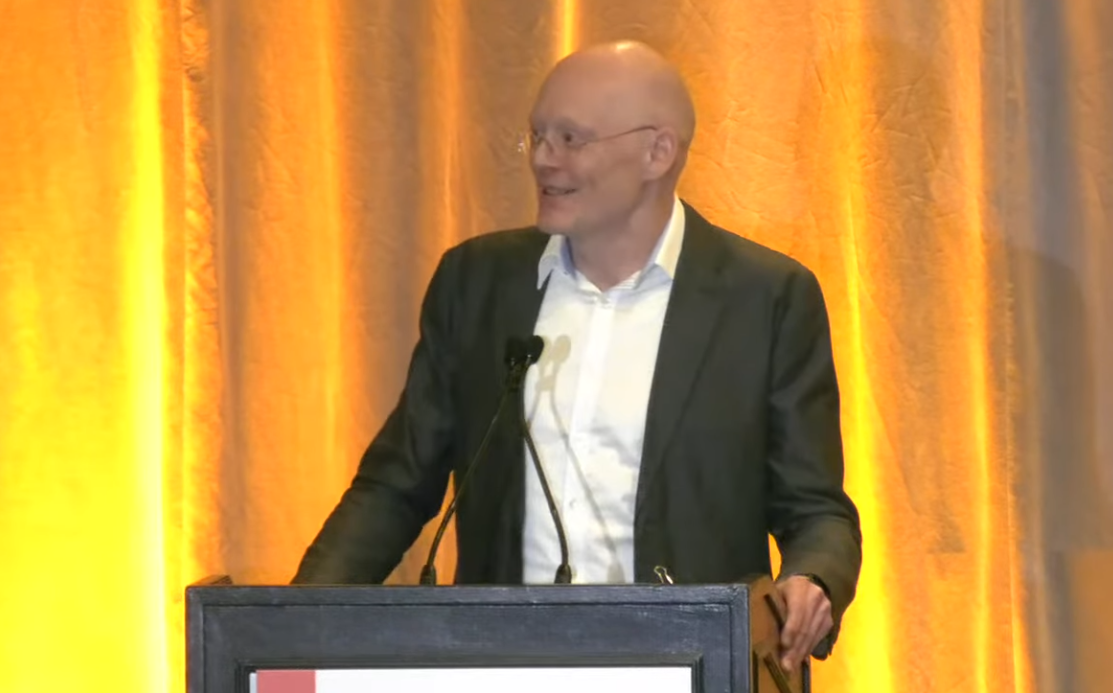
|
"Back to basics with cross-national happiness:
Interpersonal and intercultural comparability
using ordinal response scales", Seminar at Oxford Wellbeing Research Centre [2025/06]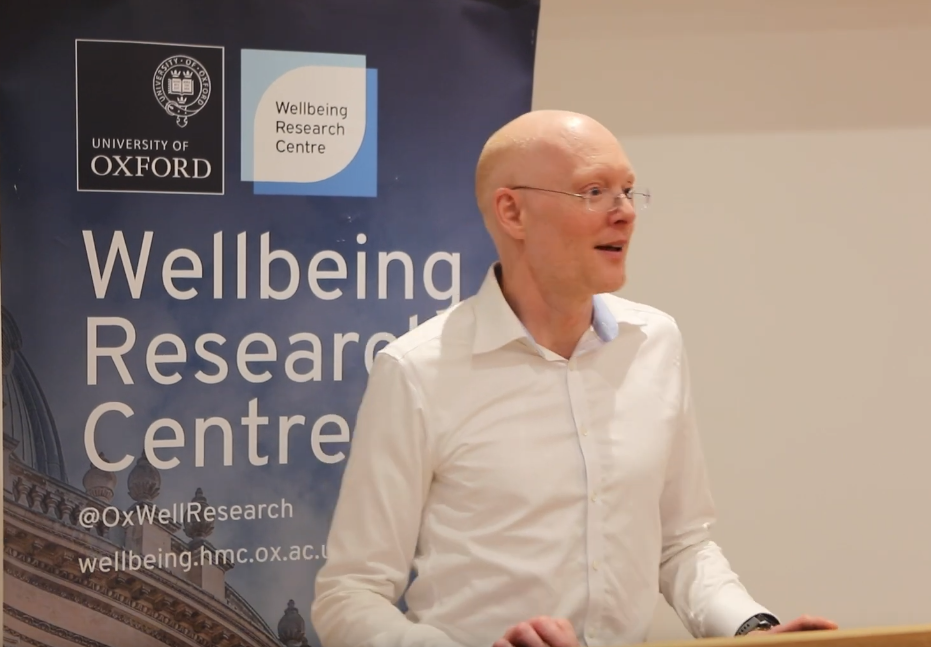
|
"Can money buy you happiness? It's complicated." -- an interview on Globe and Mail's Happy Enough podcast, Season 1 Episode 5 [2025/03]
|
Street networks and wildfire evacuations [2024/01]
|
The World Wellbeing Panel (STATEC Measuring Progress seminar, Luxembourg) [2024/08]
|
High life satisfaction among small-scale societies with low incomes (STATEC Measuring Progress conference, Luxembourg) [2024/06]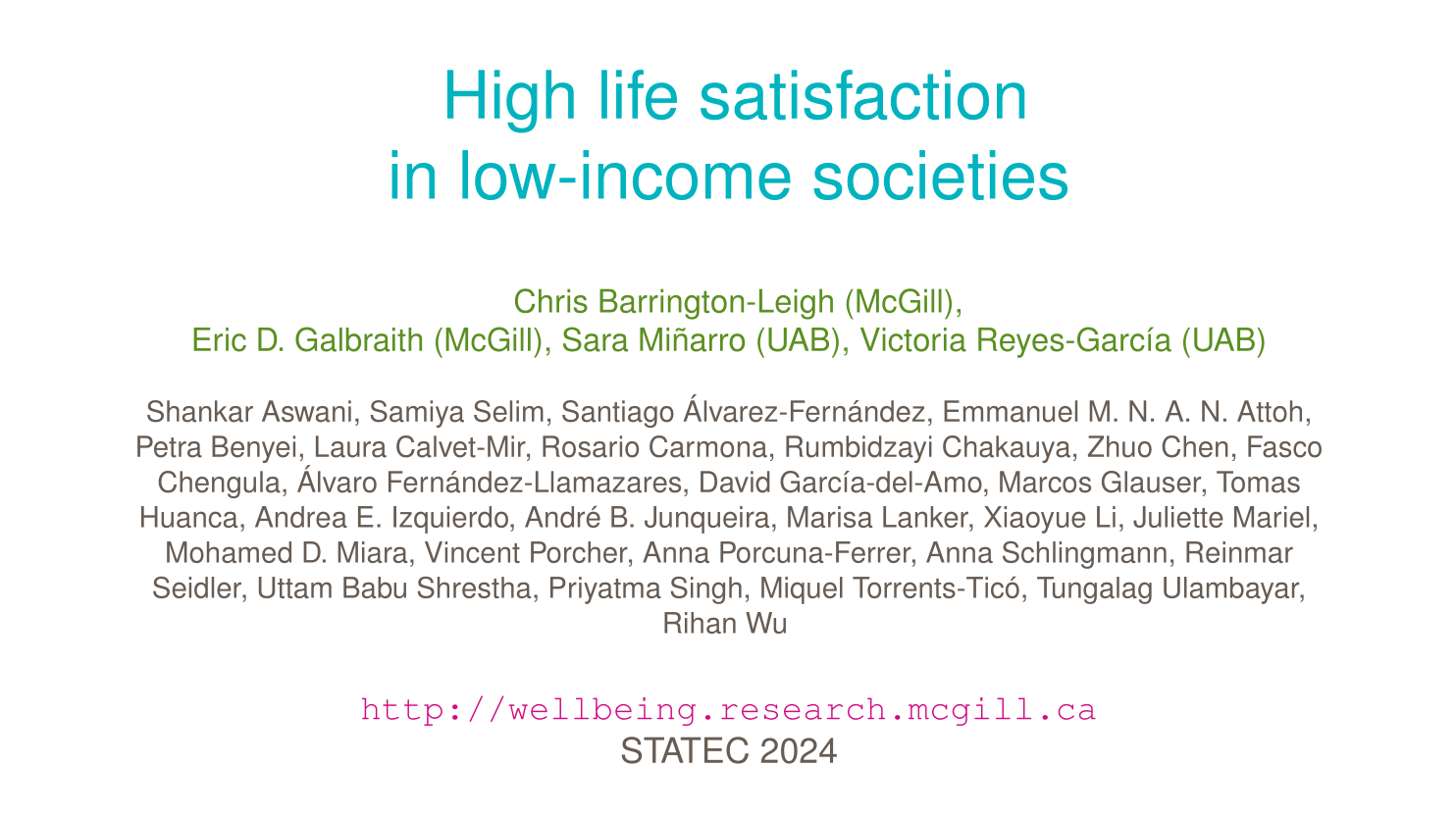
|
|
CBC Ontario Today with Amanda Pfeffer: "When did money make you unhappy?" [2024/03] |
CBC The Current with Matt Galloway: "Why happiness rates are falling among younger generations" [2024/03]
|
CBC Let's Go with Sabrina Marandola: "New global report maps happiness" [2024/03]
|
Subjective well-being as the central goal for government? How, why, and why not quite (STATEC, Luxembourg) [2023/09]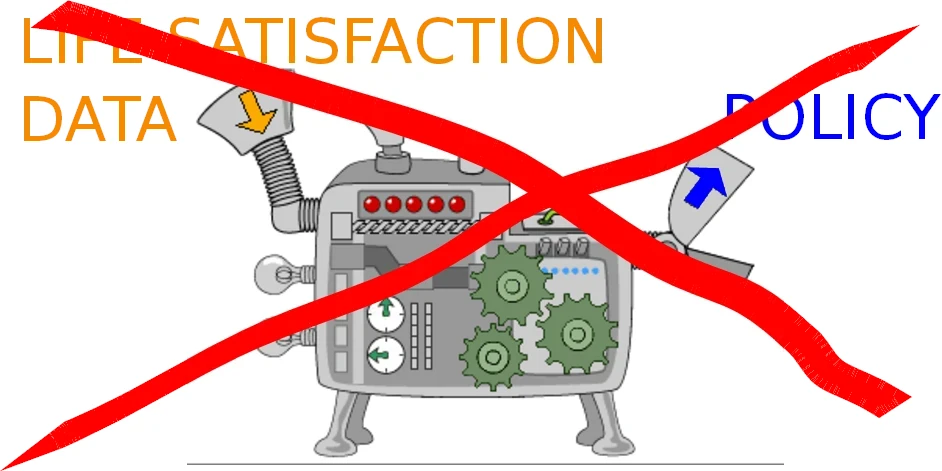
|
|
Cultural differences in happiness
University of Oxford [2022/07] 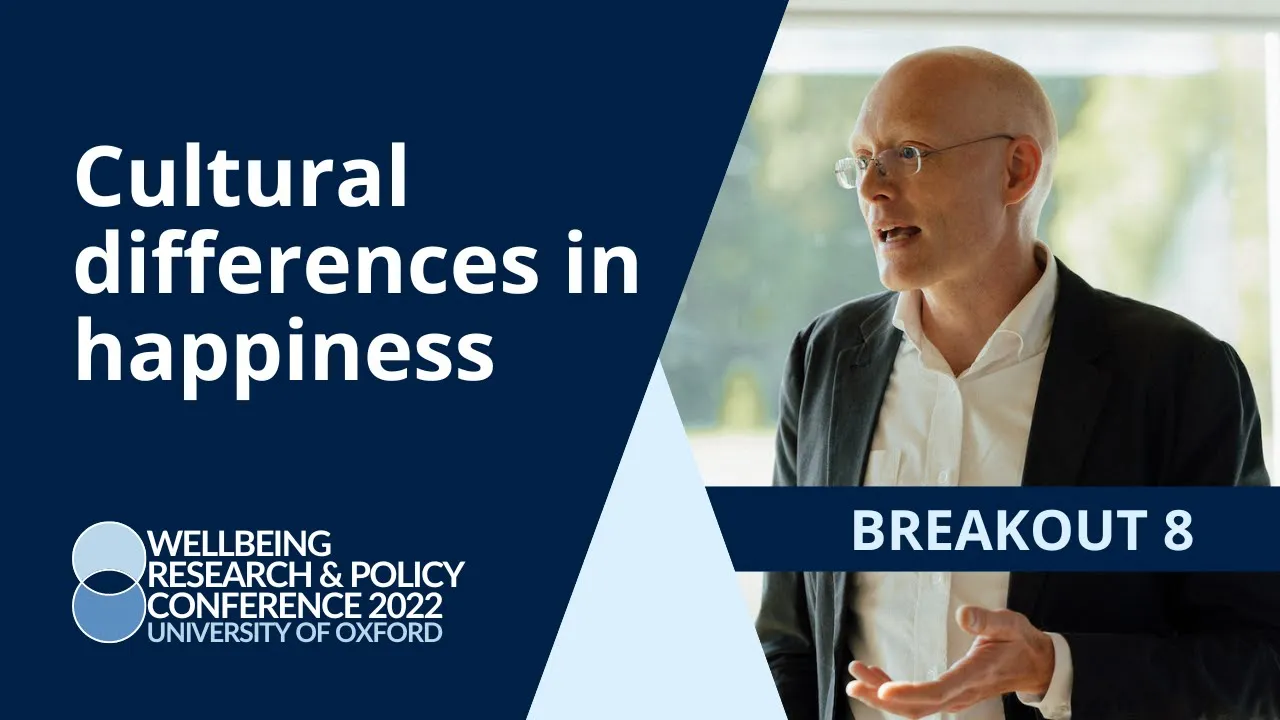
|
Policy brief: How does a wellbeing approach relate to public policies around mental health? [2023/02]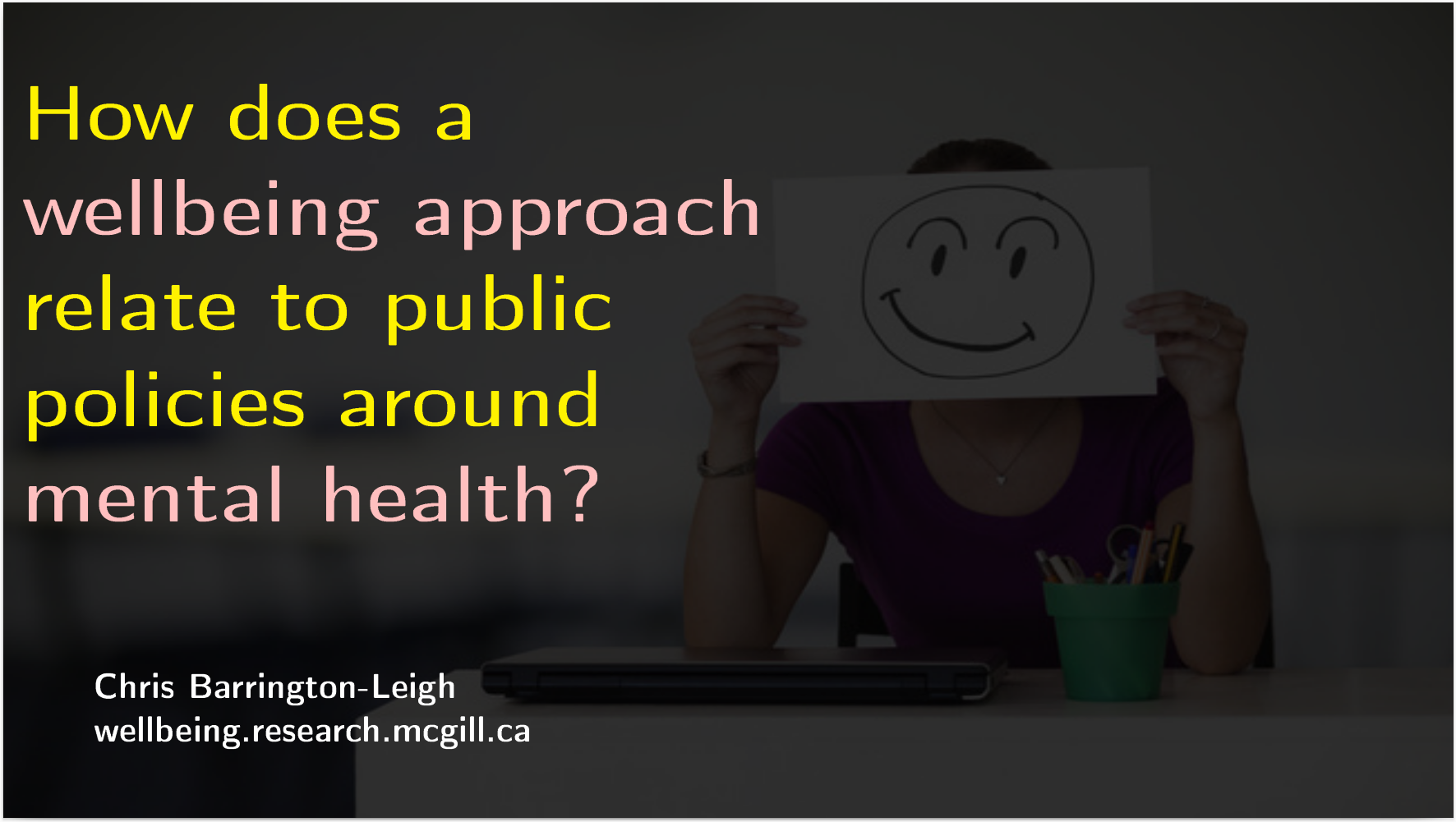
|
CWKN Webinar: The economics of happiness: is it ready for serious cost-benefit analysis? [2022/11]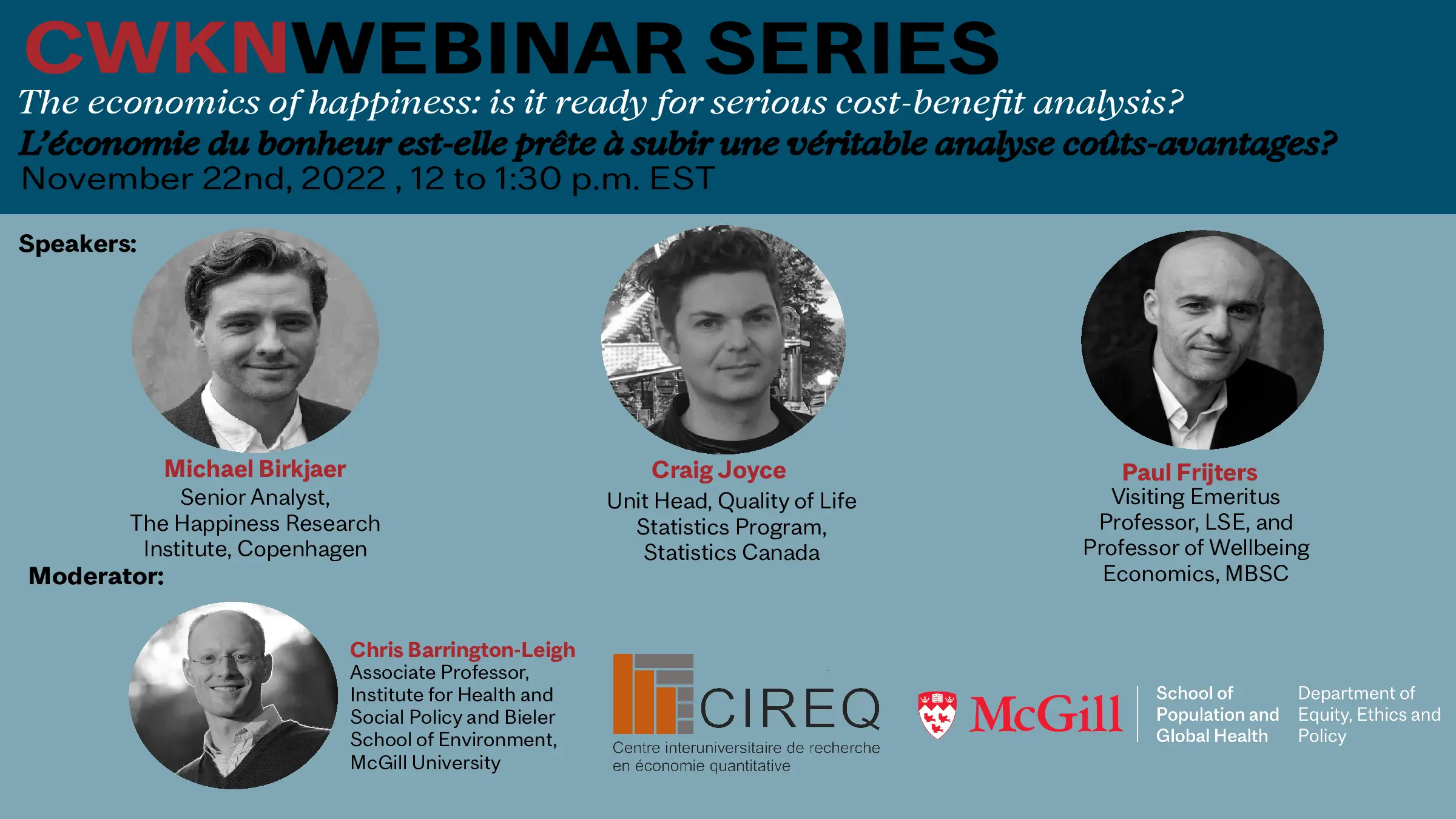
|
The Future is Bright and Green (final lecture in ENVR 201)
|
CWKN Webinar: Wellbeing policy in Wales and in Canada [2022/09]
|
How measuring happiness can create better communities [Municipal World podcast, 2022/06]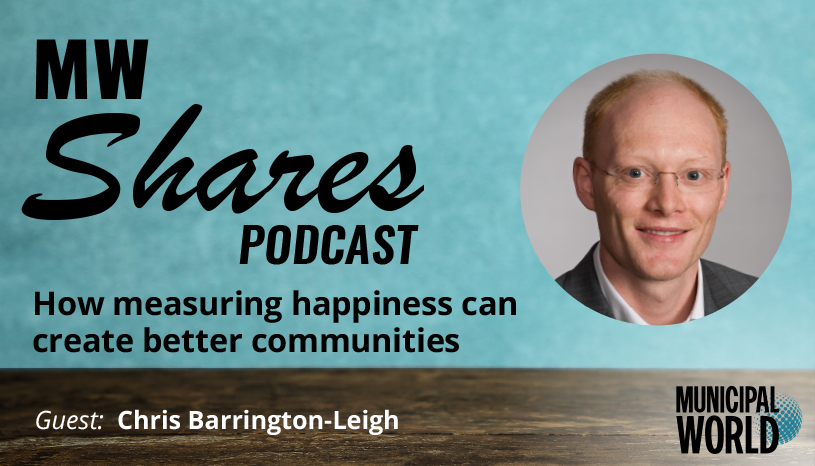
|
World Happiness Report 2022 Chapter 3 Webinar [2022/06]
|
World Happiness Report 2022 Launch [2022/03]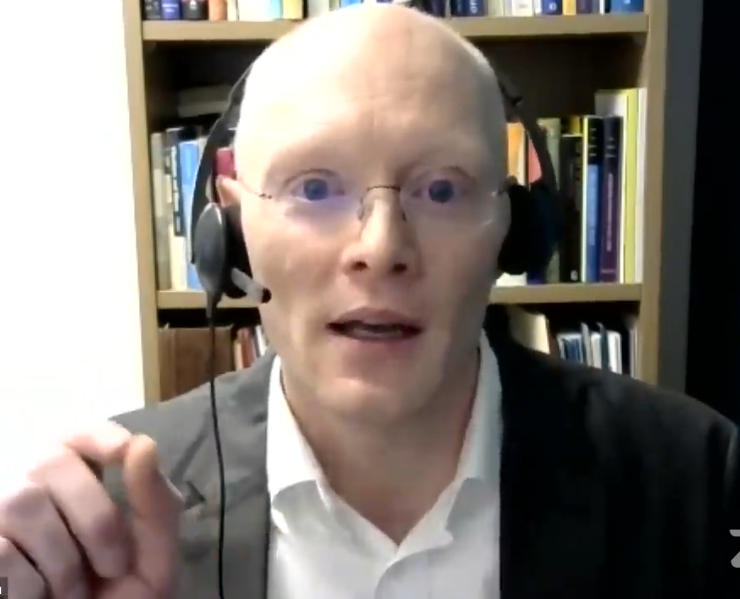
|
Well-being, Sustainability, and Progress: How to Make and Measure Policy [2019/05]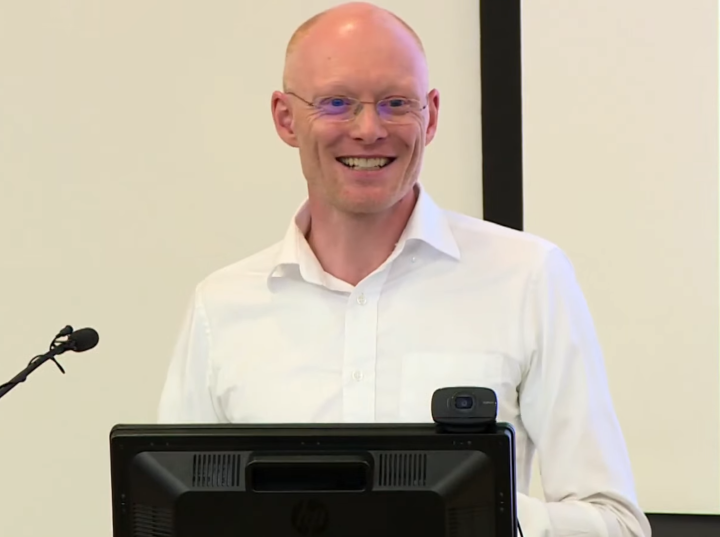
|
Do not subsume sustainability policy under human wellbeing! (includes alien attacks!) [2021/06]
|
Limitations to the life satisfaction approach to policy [2021/05]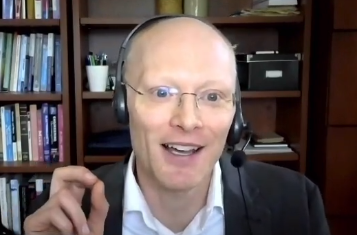
|
Laughter therapy!? and Canada's fall in the world happiness report rankings (CBC Daybreak) [2021/03]
|
Is subjective wellbeing comparable across cultures?" (GYA-ISC dialogue) [2020/12]
|
Three-minutes on "Rethinking Human Development" (GYA-ISC dialogue) [2020/12]
|
Wellbeing budgeting: NCCHPP/CCNPPS webinar [2020/11]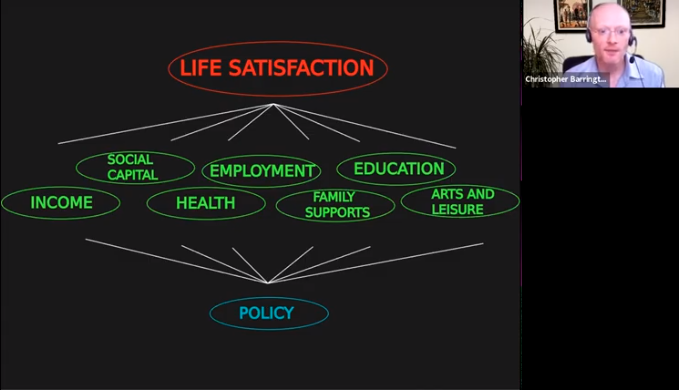
|
Wellbeing, sustainability, & progress: government accountability to human experience [2020/09] ISQOLS Webinar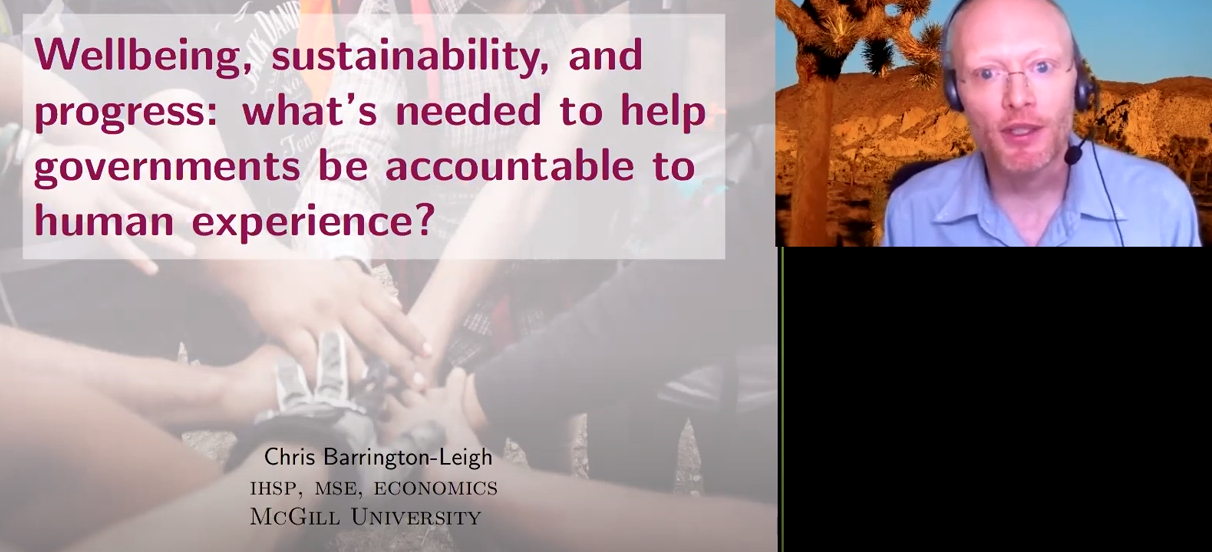
|
Why is street network connectivity so important? PNAS Science Sessions podcast [2020/04]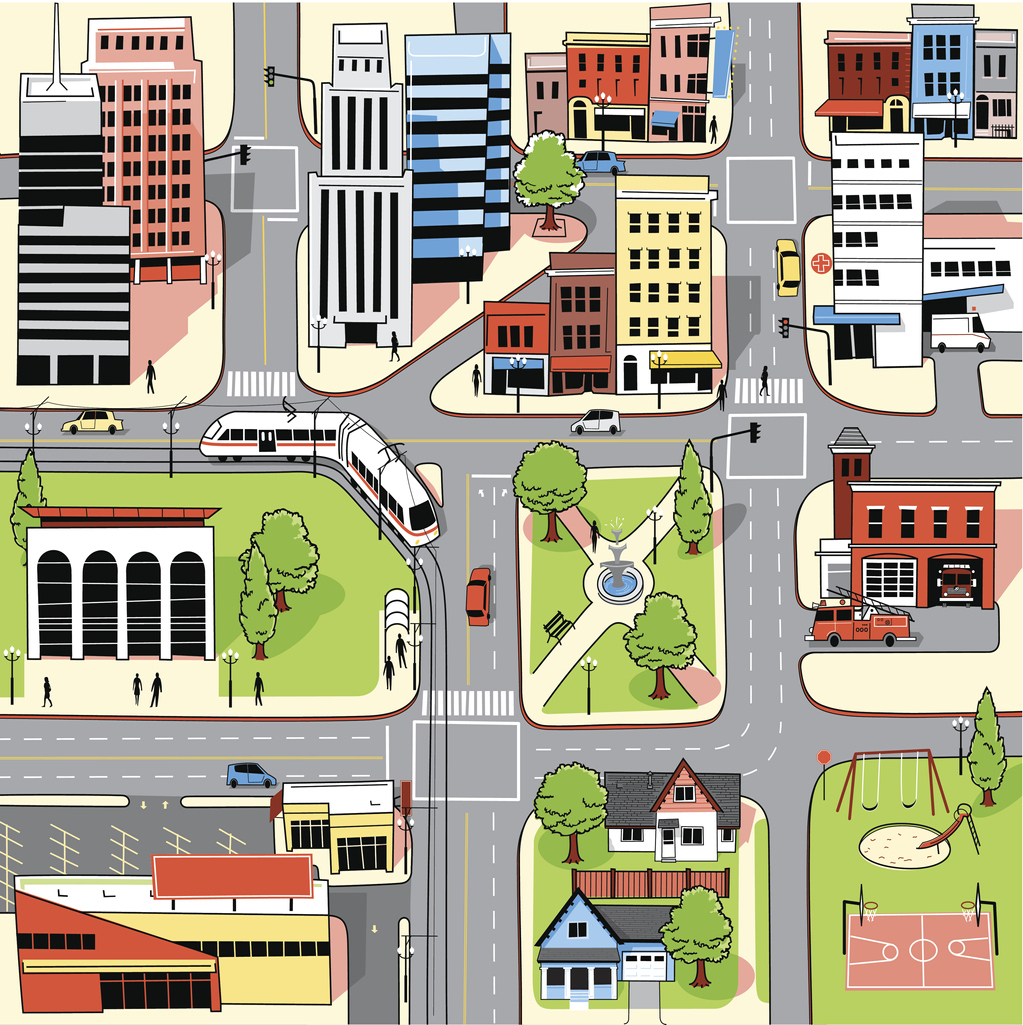
|
CBC Let's Go: How have cities around the world built their networks of streets? [2020/01]
|
What makes societies happy? The dawn of happiness-guided policies? [2019/03]
|
Are Canadians in small towns happier than those in cities? [2019/02]
|
What is the future of global well-being? [2019/01]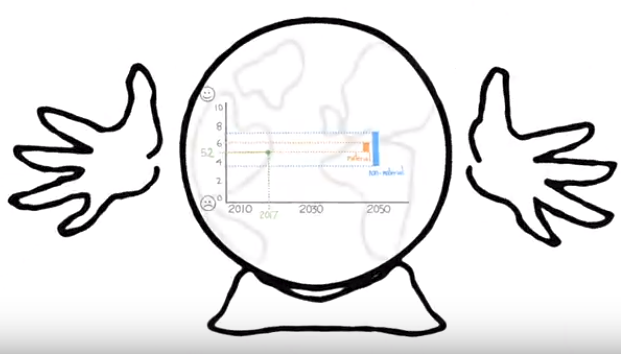
|
|
Sustainability and Well-being [2018/01] |
The world's road map is more than 80% complete [2017/08]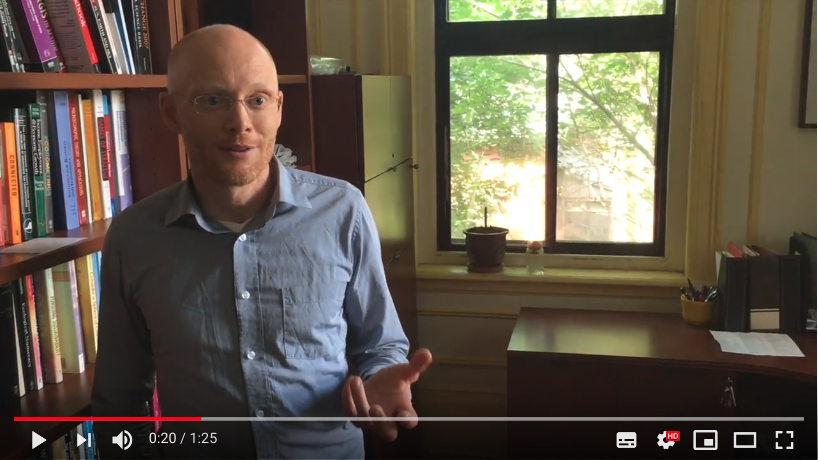
|
|
Why study road connectivity? [2016/12] |
BNN Bloomberg: Ottawa's carbon plan [2016/10]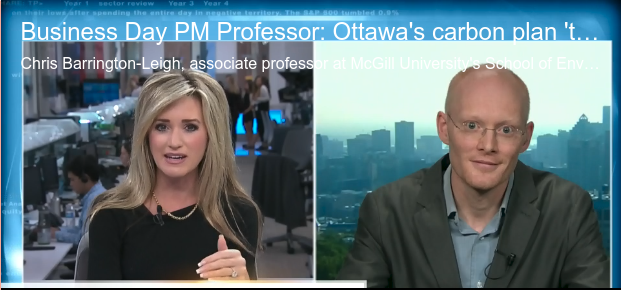
|
My One Sustainability Action [2015/01]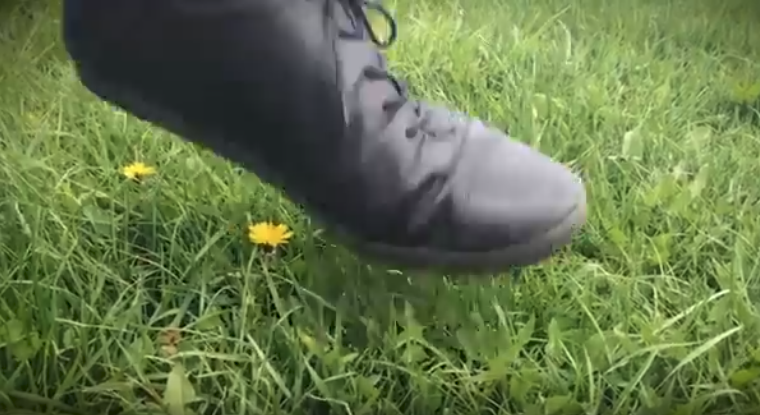
... ou en français: 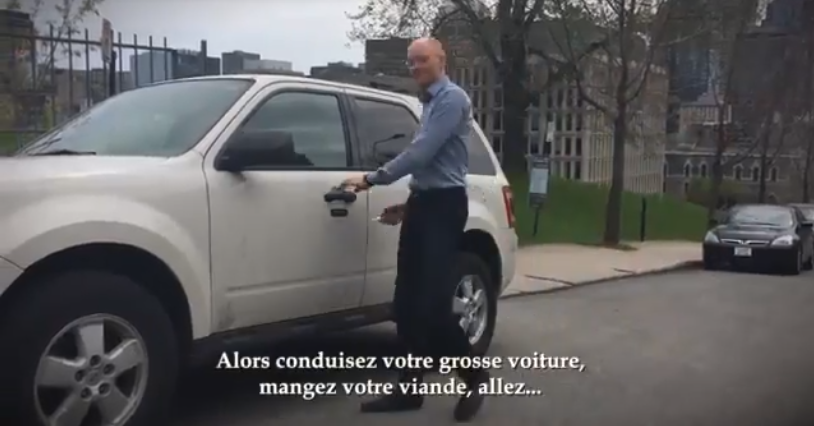
|
Measuring happiness, Regenerative Neighborhoods workshop, UBC [2014/09]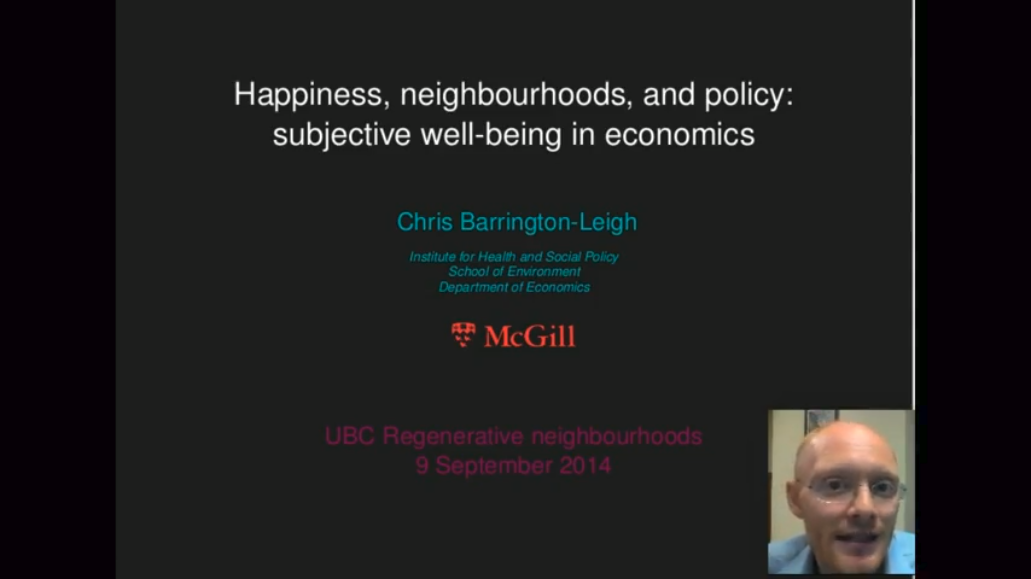
|
McGill student happiness conference [2013/01]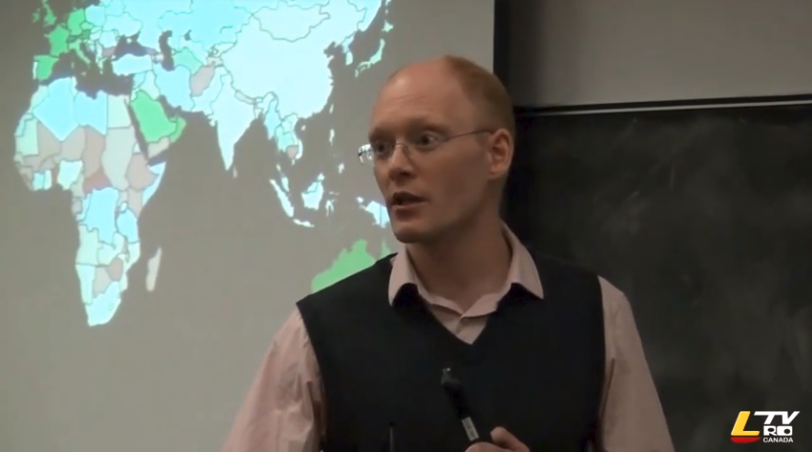
|
|
Life satisfaction in Québec [2013/01] (aussi disponible en français) 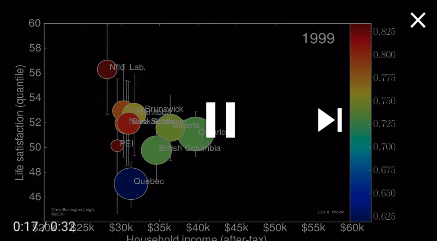
|



